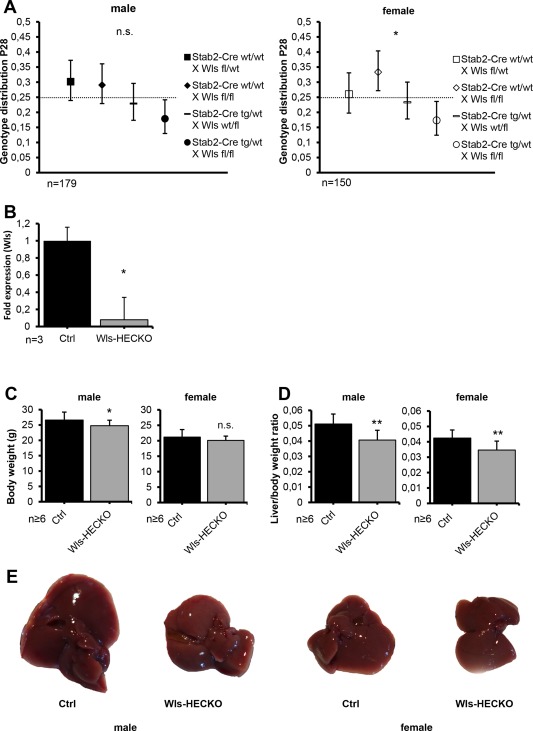Figure 1.

Wls‐HECKO mice are viable and show a reduction of endothelial Wls (* P < 0.05; ** P < 0.01; n.s. = not significant). (A) Genotype distribution of male (left) and female (right) mice at P28 (bars, 95% confidence intervals). (B) Reduction of Wls mRNA in HECs shown by qRT‐PCR. Fold change relative to β‐Actin is shown; Ctrl was set to 1. Bars represent SEM. Mean fold reduction in Wls‐HECKO is 12.5 (P = 0.0495; n = 3). Mice used were 12‐week‐old males. (C) Body weight differs significantly between male Ctrl and male Wls‐HECKO mice (26.8 vs. 24.6 g; P = 0.0132) at 13 weeks. In female mice, no significance in body weight is found between Ctrl and Wls‐HECKO, although there is a trend (P = 0.0759) toward a slightly lower body weight. (D) LW/BW at 13 weeks differs significantly between both male Ctrl and male Wls‐HECKO (5.1% vs. 4.1%; P < 0.01), as well as female Ctrl and female Wls‐HECKO (4.2% vs. 3.1%; P < 0.01), respectively. (E) Representative pictures of sectioned livers from male (left) and female (right) Ctrl and Wls‐HECKO mice (12 weeks old). Abbreviation: P, postnatal day.
